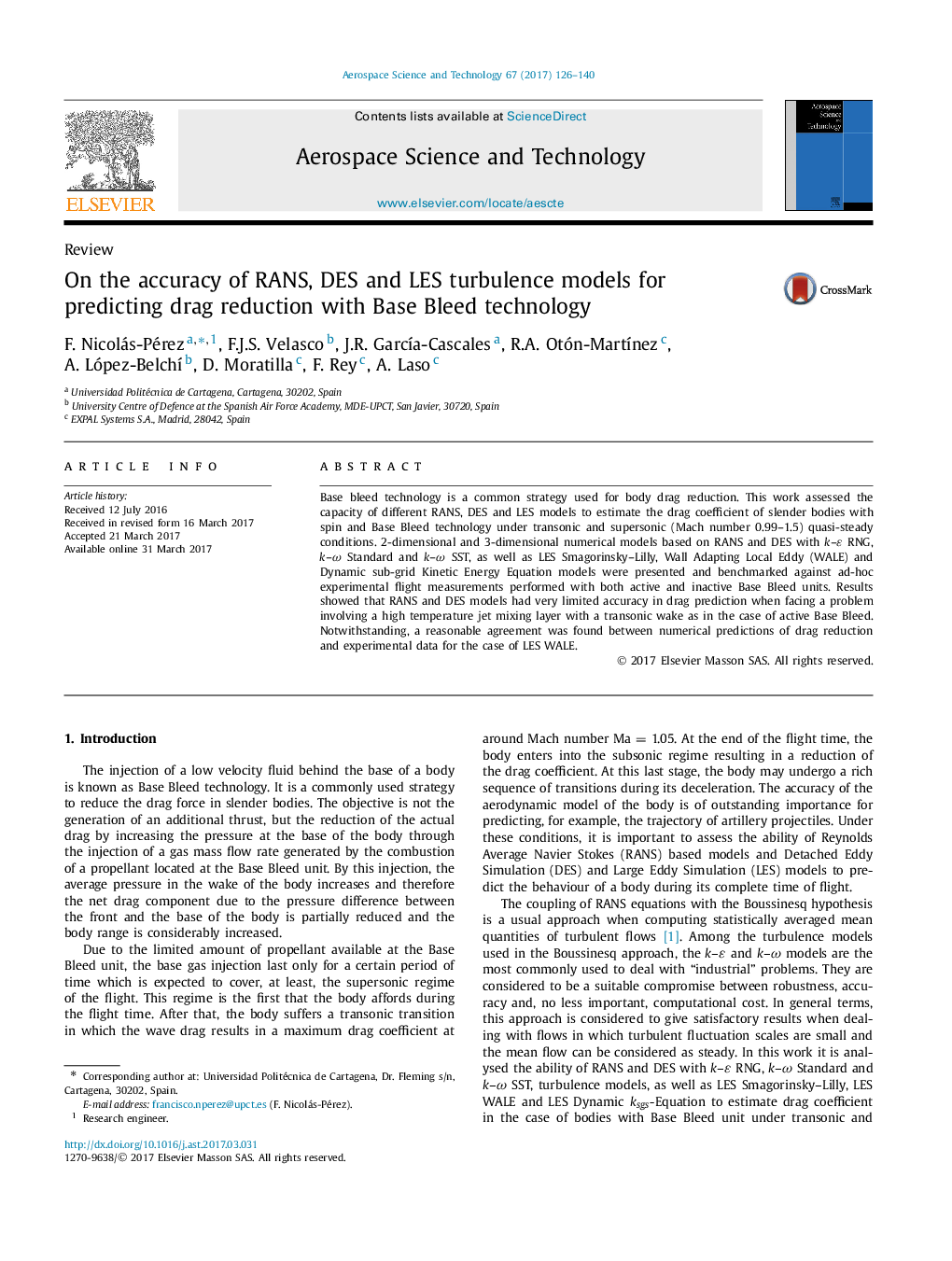| کد مقاله | کد نشریه | سال انتشار | مقاله انگلیسی | نسخه تمام متن |
|---|---|---|---|---|
| 5472795 | 1520067 | 2017 | 15 صفحه PDF | دانلود رایگان |
عنوان انگلیسی مقاله ISI
On the accuracy of RANS, DES and LES turbulence models for predicting drag reduction with Base Bleed technology
دانلود مقاله + سفارش ترجمه
دانلود مقاله ISI انگلیسی
رایگان برای ایرانیان
موضوعات مرتبط
مهندسی و علوم پایه
سایر رشته های مهندسی
مهندسی هوافضا
پیش نمایش صفحه اول مقاله

چکیده انگلیسی
Base bleed technology is a common strategy used for body drag reduction. This work assessed the capacity of different RANS, DES and LES models to estimate the drag coefficient of slender bodies with spin and Base Bleed technology under transonic and supersonic (Mach number 0.99-1.5) quasi-steady conditions. 2-dimensional and 3-dimensional numerical models based on RANS and DES with k-ε RNG, k-Ï Standard and k-Ï SST, as well as LES Smagorinsky-Lilly, Wall Adapting Local Eddy (WALE) and Dynamic sub-grid Kinetic Energy Equation models were presented and benchmarked against ad-hoc experimental flight measurements performed with both active and inactive Base Bleed units. Results showed that RANS and DES models had very limited accuracy in drag prediction when facing a problem involving a high temperature jet mixing layer with a transonic wake as in the case of active Base Bleed. Notwithstanding, a reasonable agreement was found between numerical predictions of drag reduction and experimental data for the case of LES WALE.
ناشر
Database: Elsevier - ScienceDirect (ساینس دایرکت)
Journal: Aerospace Science and Technology - Volume 67, August 2017, Pages 126-140
Journal: Aerospace Science and Technology - Volume 67, August 2017, Pages 126-140
نویسندگان
F. Nicolás-Pérez, F.J.S. Velasco, J.R. GarcÃa-Cascales, R.A. Otón-MartÃnez, A. López-BelchÃ, D. Moratilla, F. Rey, A. Laso,